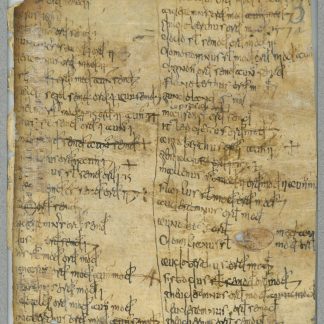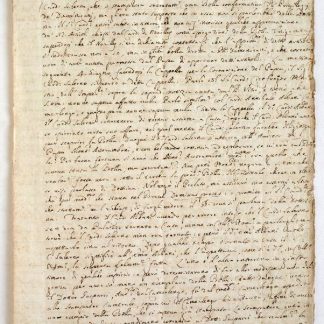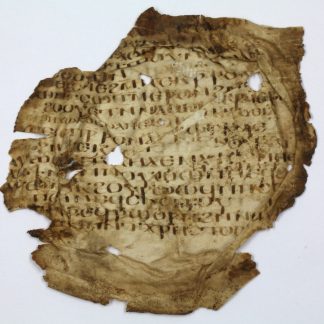Fifth century Coptic fragment of the Psalms
[Fragment of a MS Coptic Psalter: Psalms 19:7-20:3 and 20:6-10].
Sahidic Coptic manuscript on vellum. Single leaf, ca. 125 x 120 mm, written on recto and verso, per extensum. Ca. 17 (of 27) lines in a very fine large upright Coptic uncial, text partly indented "per cola et commata".
€ 18,000.00
A fragmentary leaf from a very early, unpublished Coptic Psalter, written in the Sahidic dialect of Upper Egypt about 150 years after it was first translated from Greek (see Budge, Nagel). The script here is a fine Coptic Uncial, derived from Greek Uncial, and showing its ultimate debt to older epigraphic letter forms in its monumental and rounded majuscules and absence of spacing between words.
The present fragment comprises the end of Psalm 19 and the beginning of Psalm 20 (20/21 in the Masoretic tradition): "We will glory in the name of the Lord our God ... O Lord, the king shall rejoice in thy strength; and in thy salvation he shall greatly exult. Thou hast granted him the desire of his soul, and hast not withheld from him the request of his lips ... Let thy hand be found by all thine enemies: ... the Lord shall trouble them in his anger, and fire shall devour them. Thou shalt destroy their fruit from the earth".
Most probably produced for use in the White Monastery (or the Monastery of St. Shenouda), Deir el-Abiad, near Sohag, Egypt, a Coptic Orthodox monastery near the Upper Egyptian city of Sohag. It was founded by St. Pigol in 442 CE, and grew substantially in importance after his nephew St. Shenouda the Archimandrite (d. 466 CE) took over in 385 CE. A prolific writer, he launched a literacy campaign within the monastery, producing a large library and establishing the house as perhaps the most important in the Coptic Church. When the first European visitors reached the monastery, the library was housed in a room to the north of the central apse called the 'Secret Chamber', which could be entered only through a hidden passage. The hoard of more than 9,000 early Coptic leaves was discovered by G. Maspero in 1883, and most of it is now in Paris, Bibliothèque Nationale, but parts are held in the Pierpont Morgan Library, Cambridge University Library and Biblioteca Apostolica Vaticana.
1) Likely from the White Monastery (or the Monastery of St. Shenouda), Deir el-Abiad, near Sohag, Egypt.
2) In the collection of Maurice Nahman (1868-1948), French collector-dealer, and Head Cashier at the Crédit Foncier d'Egypte in Cairo, who used this position to establish himself as the foremost antiquity dealer of Cairo in the 1920s and 1930s. A sale of part of his collection was held by Christie's, London, on 2 March 1937. After his death his son kept the business going until 1953, and then the remaining stock was offered at Hotel Drouot, Paris, on 26-27 February and 5 June 1953, with the remainder apparently passing to Erik von Scherling.
3) Schoyen Collection, London and Oslo, addendum to their MS 114.
Vellum wrinkled and shrunken. Fragmentary; some edges browned or lightly soiled; several small holes affecting the text.
Schøyen MS 114 (addendum). Cf. E. A. Wallis Budge, The Earliest Known Coptic Psalter, 1898, and P. Nagel, ‘Der sahidische Psalter’, Der Septuaginta-Psalter, ed. Aejmelaeus and Quast, 2000, pp. 82-96.







